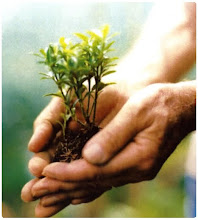Since the world population is increasing urban quarters have turned out to be an essential new leading edge for food production. The city expansion and degradation contribute towards the crucial need for urban agricultural development. The economic and health problems resulting from malnutrition have caused great concern amongst planners and decision-makers.
A case study of an Ethiopian urban agriculture consultant, Yilma Getachew argues that “…organic agriculture is a valid strategy for both stimulating economic growth and developing markets…” and that he could verify this by his experience in supporting urban agriculture in three towns in Ethiopia. “Families in one town keep dairy cows either to supplement their meager salaries, or are totally dependent on milk and dung sales as their sole source of family income. In the other two towns, the main income source is the production of Irish potatoes and sweet potatoes together with a small amount of assorted vegetables not only selling to local markets but also to markets within a 200 kilometer radius. In this way, organic agriculture in an urban setting can both be a tool for community building (health and vitality) and development (income generation and marketing of scarce nutritious food).”
Guatemala City Problem and Solution
One of Guatemala's most alarming issues is the lack of access by all of its residents to a clean, safe water supply.Like other developing country cities, Guatemala City grew very quickly during the 1980s. Its population almost doubled in under 40 years, from 477,000 in 1955 to 946,000 in 1995, and the metropolitan region is even larger, comprising approximately 3 million people.
A large portion of the residents live in precarious and illegal squatter settlements.The residents of the squatter settlements have no legal rights to the land, pay no taxes, and receive no city services.Because of poor living conditions, including the lack of clean water and the consumption of contaminated water, people in these settlements suffer many health problems.
Two different models for improved water supply were developed: the single-source tank and the well. Both required active community involvement, outside technical help, and the institutional support of COINAP.
In Chinautla (one neighbourhood of Guatemala City), residents asked the city to install the single-source water tank. Such units are usually installed only on a temporary basis at construction sites. From this single source, the community created a supply network to reach individual residences. UNICEF provided the funds for the pipes and other materials, and each family provided its own home connection. The local community association receives the bill from the water company, and it collects payment from residents for the water they have used.
Roksena Nikolova
References:
1) Getachew, Yilma."The Living Garden". http://www.ruaf.org/sites/default/files/The%20Living%20Garden.pdf (accessed November 01, 2009).
2) UNESCO. "Water Supply - Guatemala City, Guatemala." 1995-2009. Learning Journal. http://www.unesco.org/education/tlsf/TLSF/theme_c/mod17/uncom17t03s01.html (accessed November 01, 2009).






























